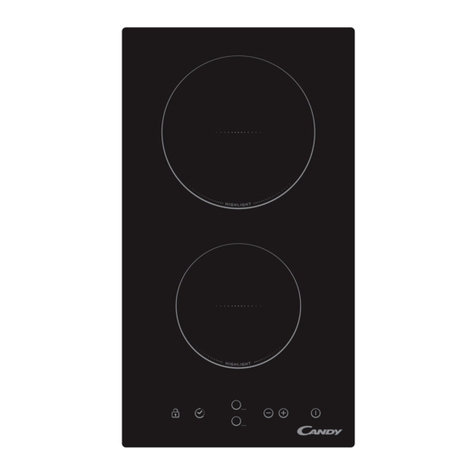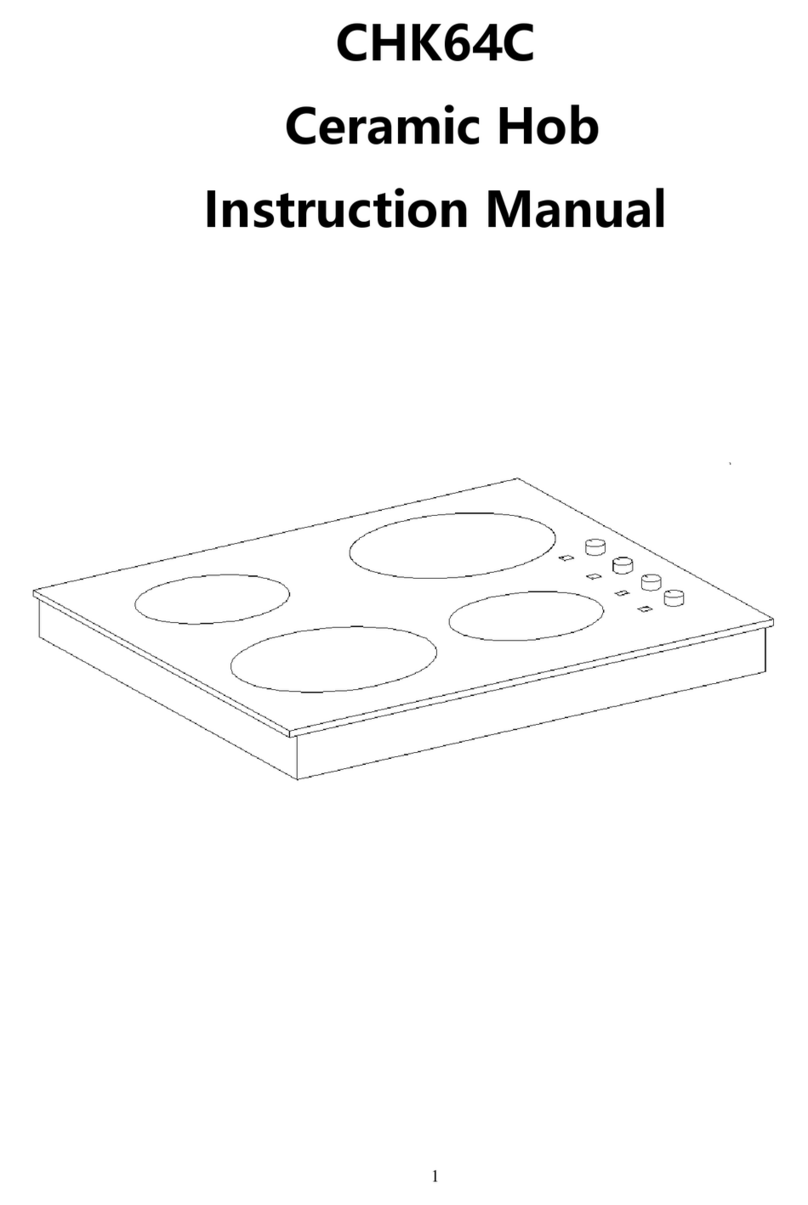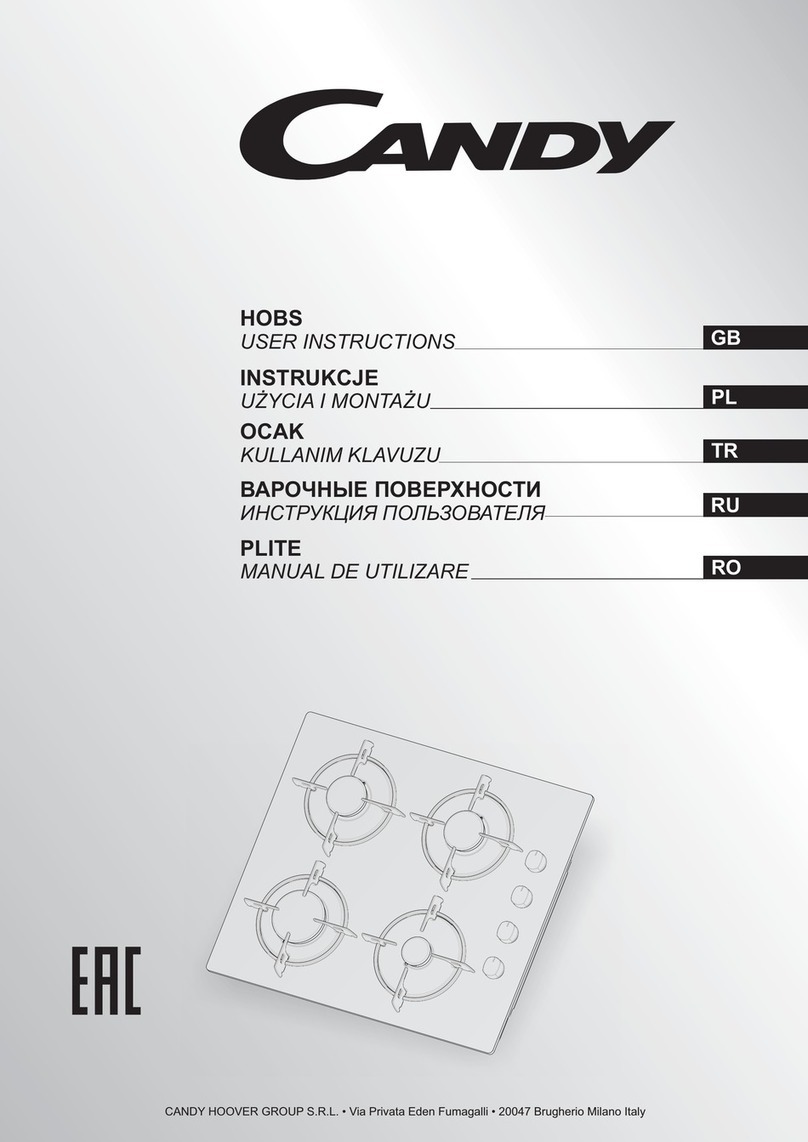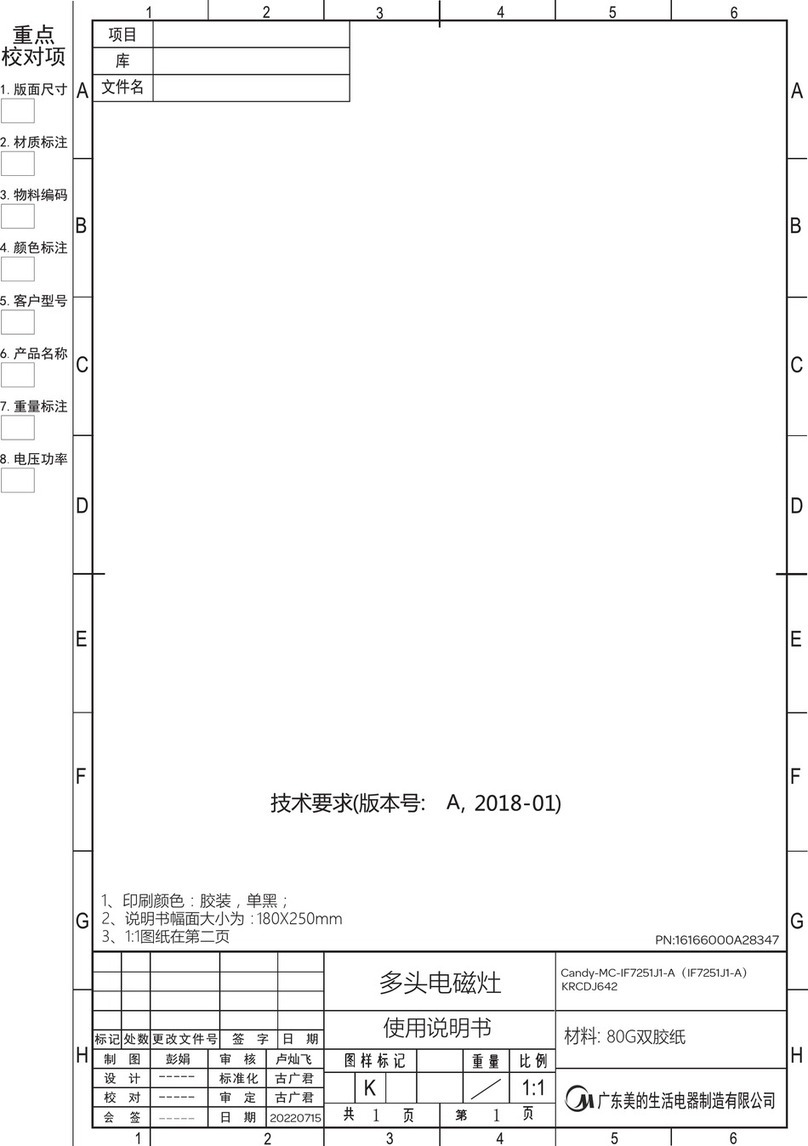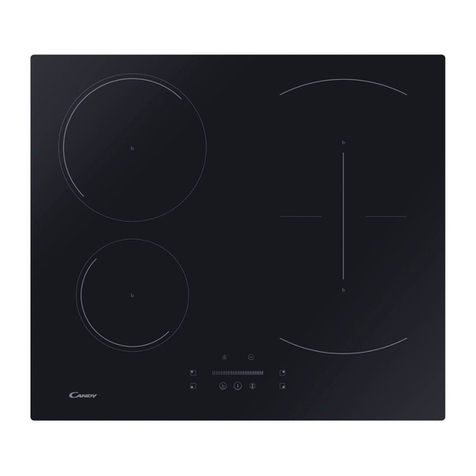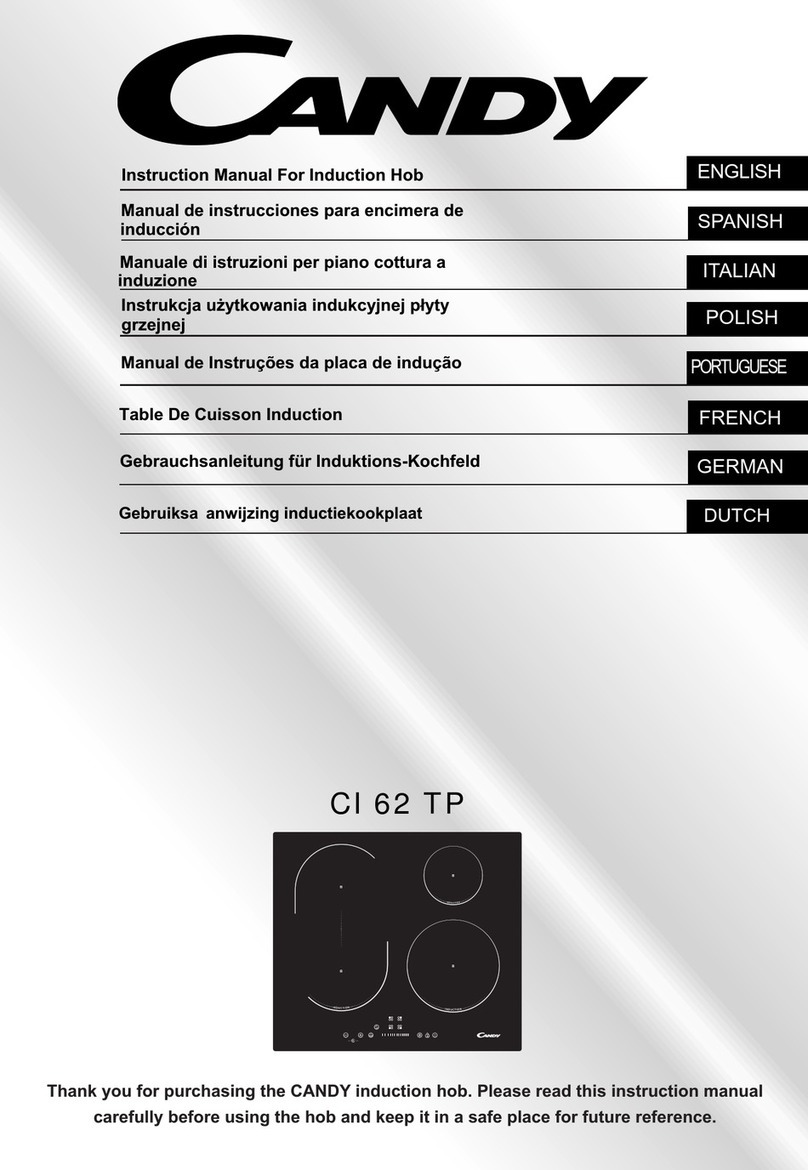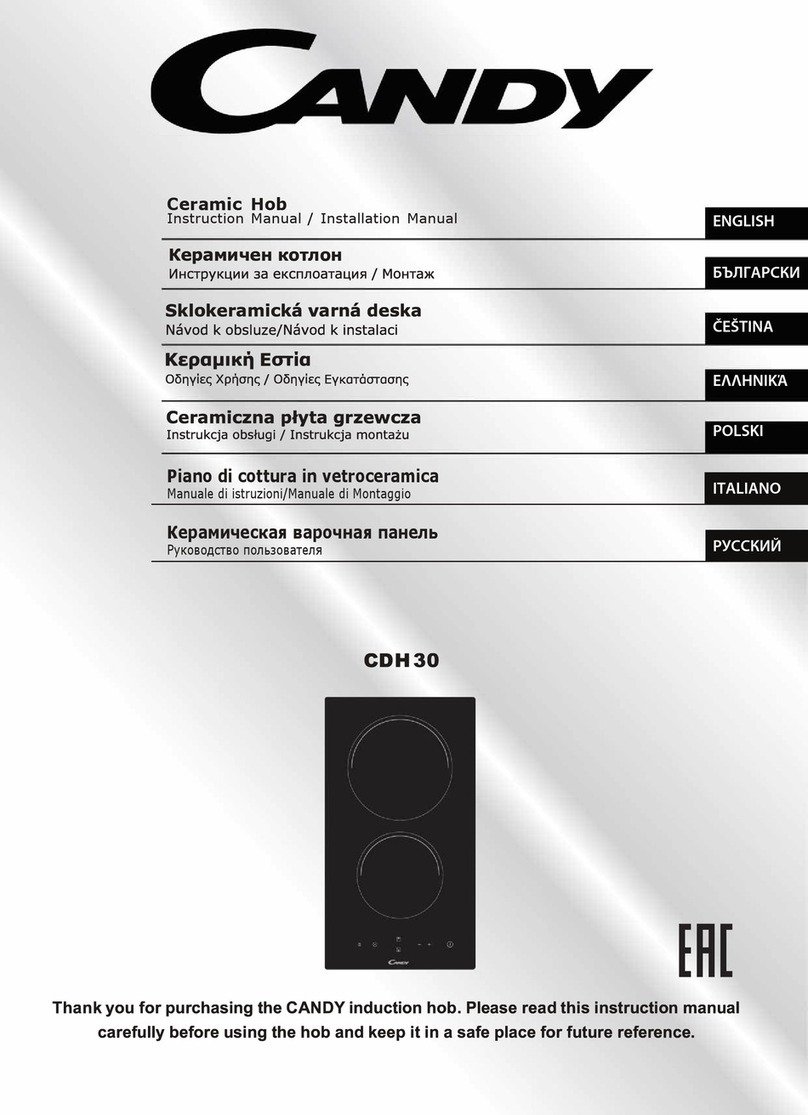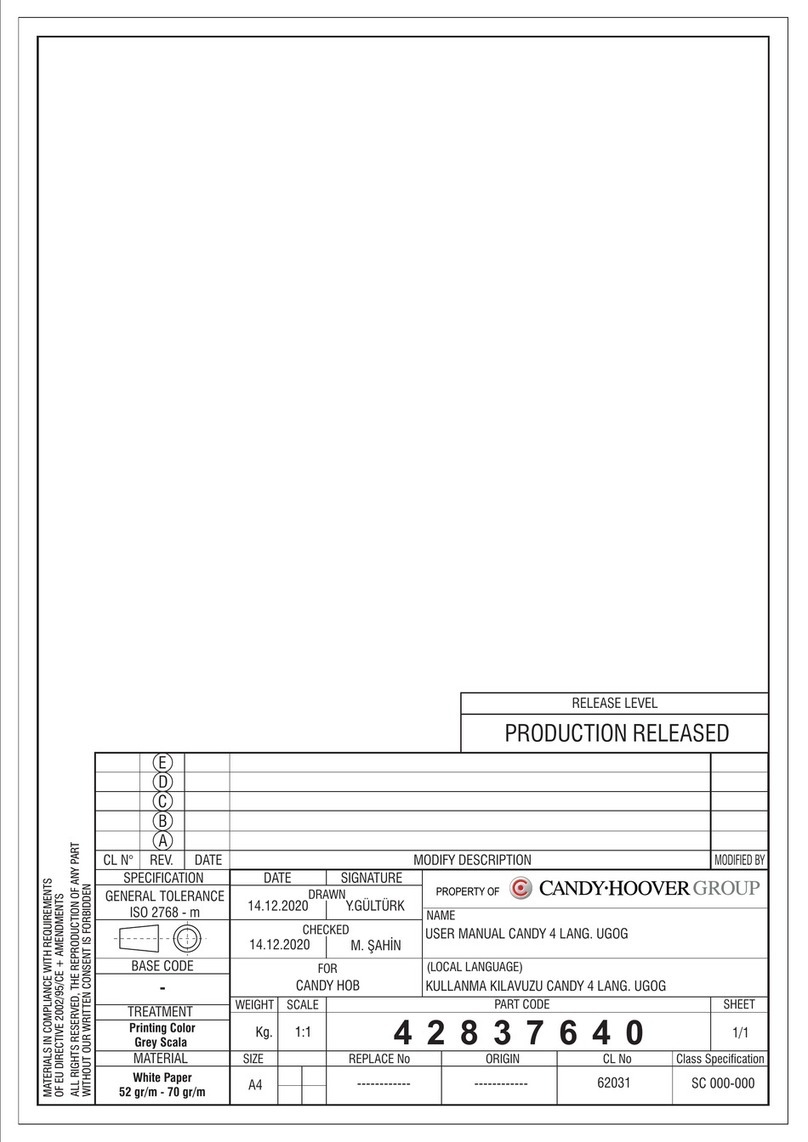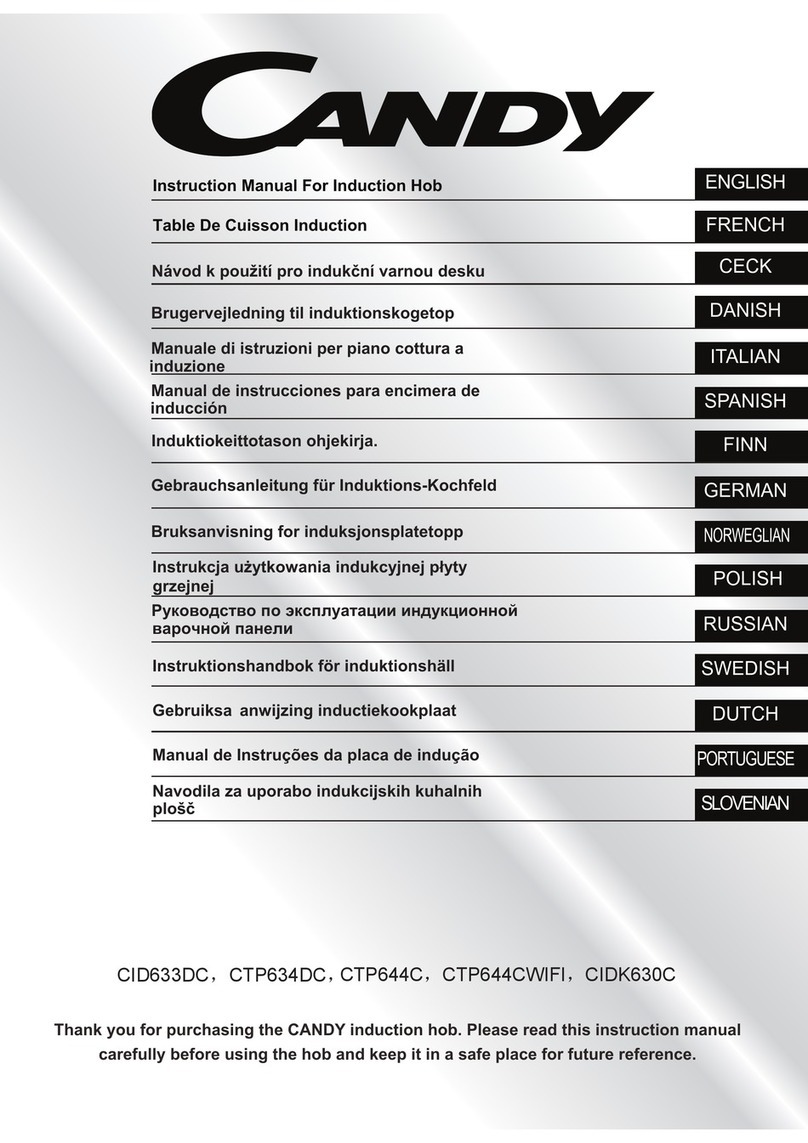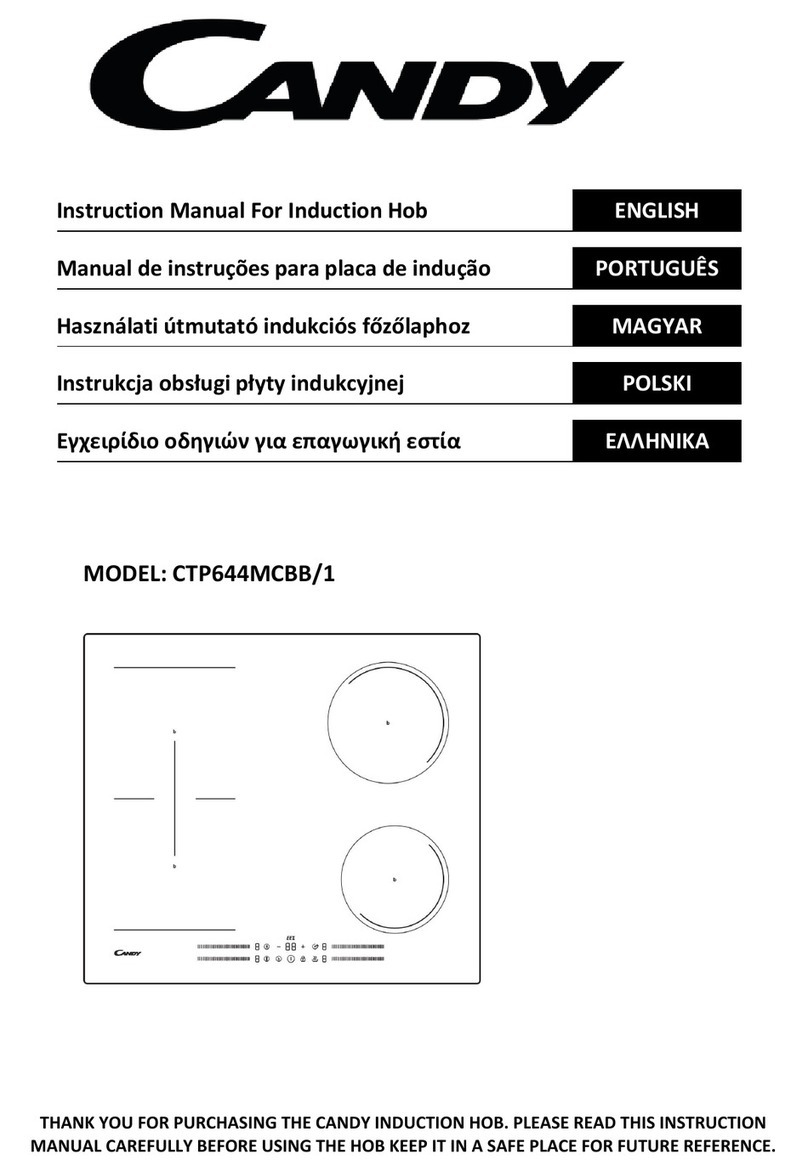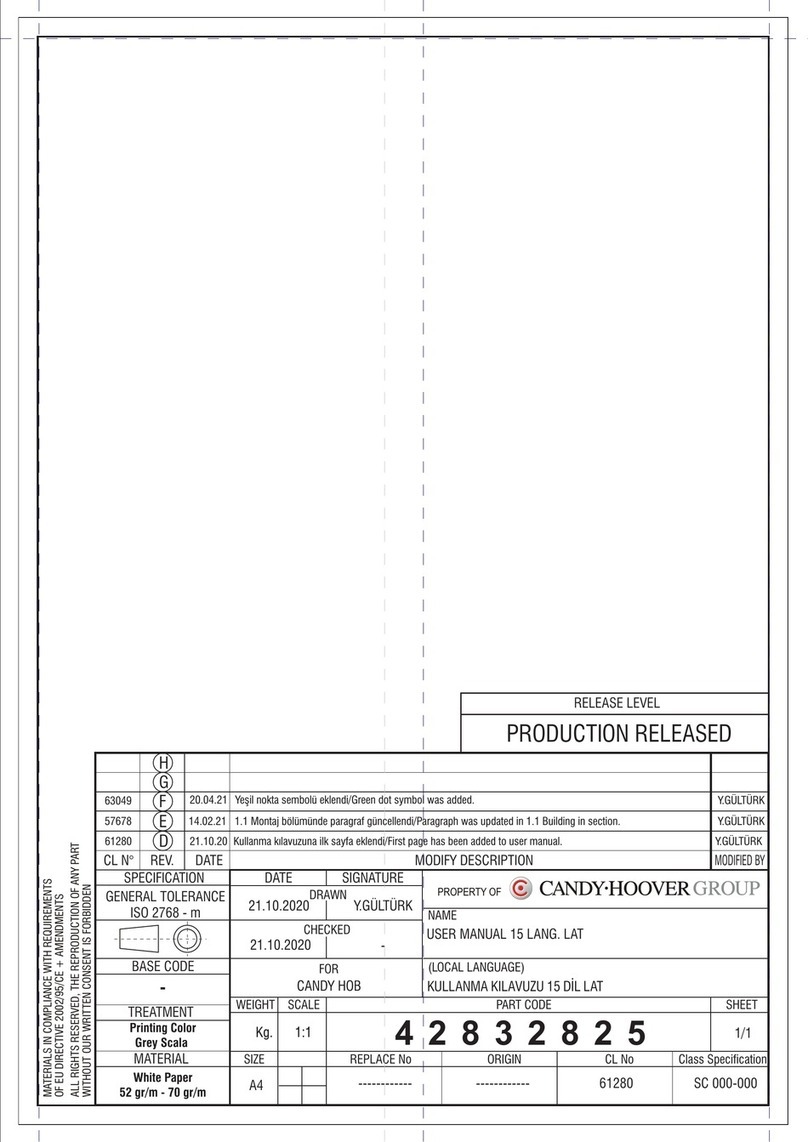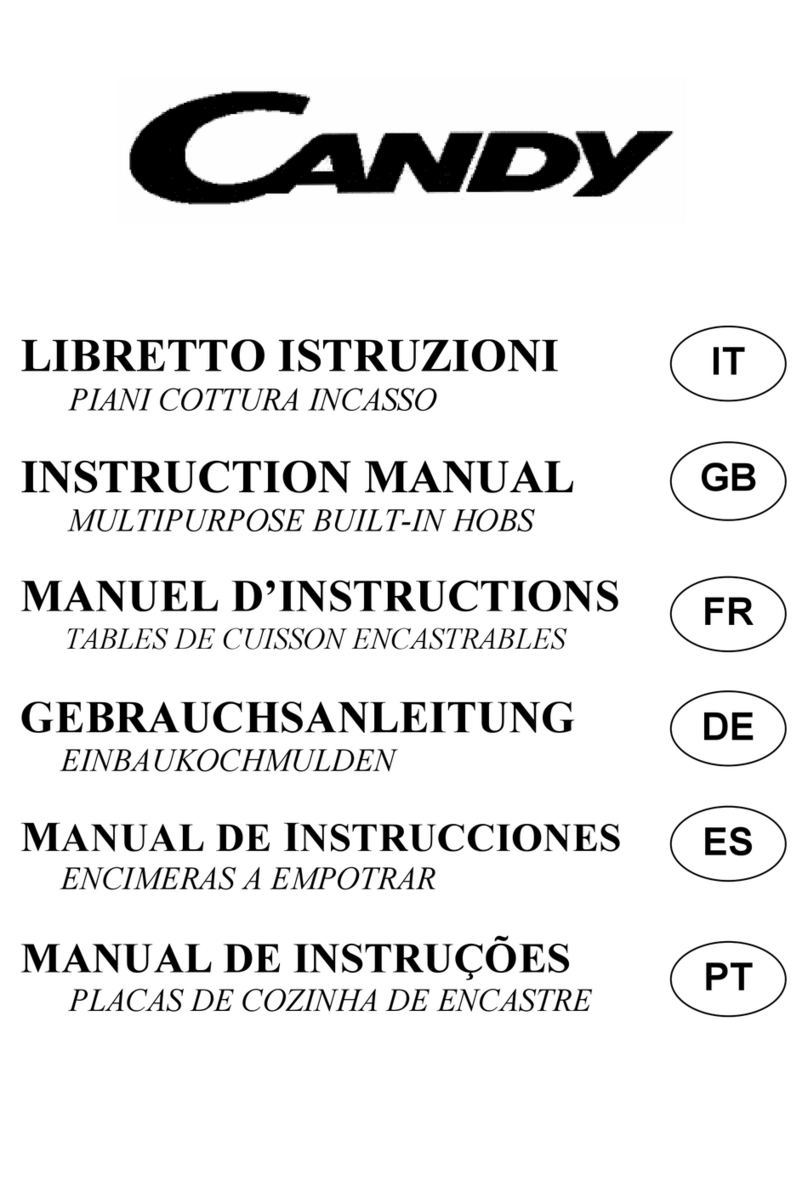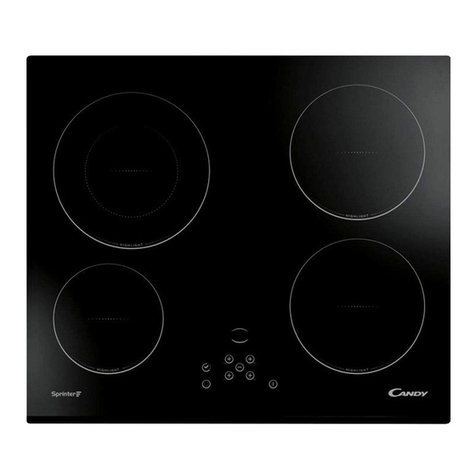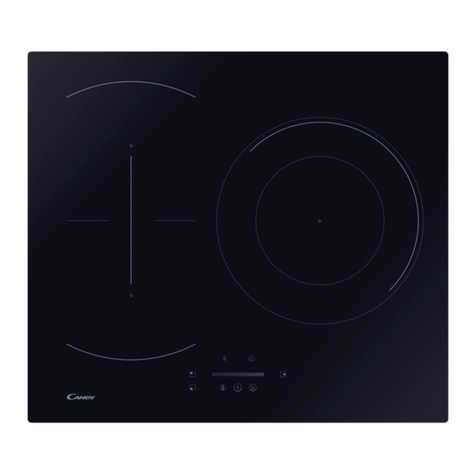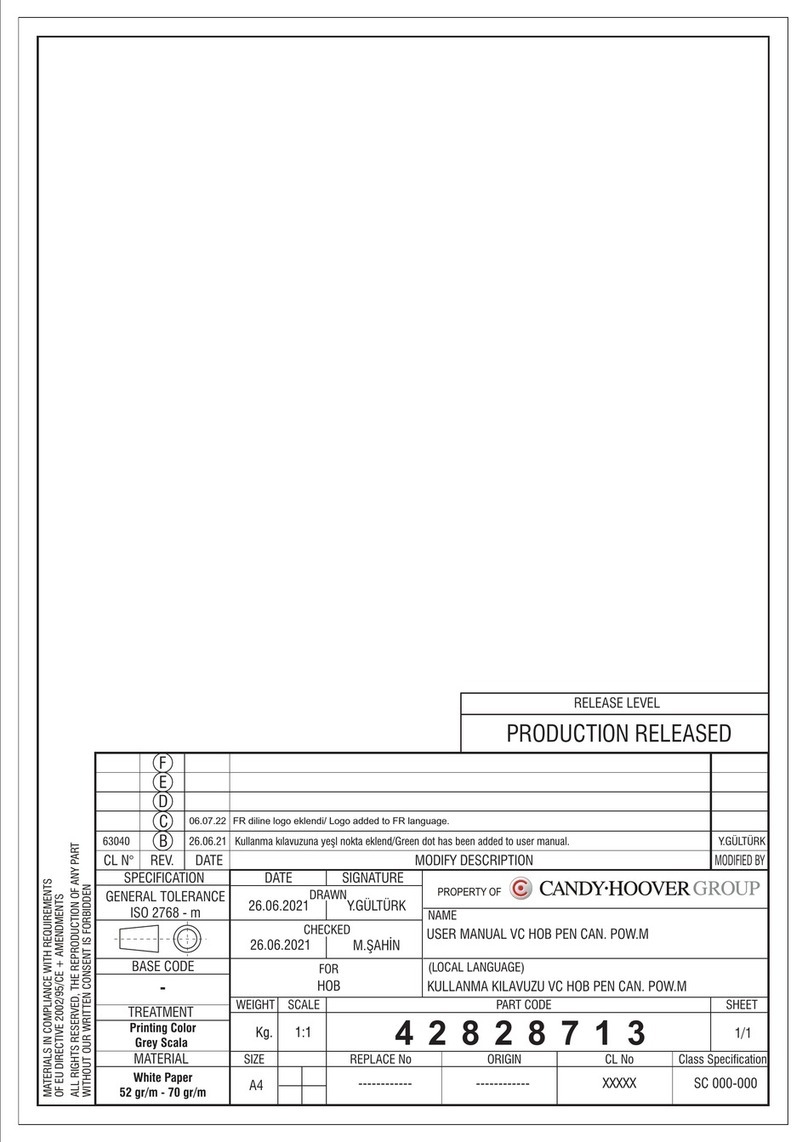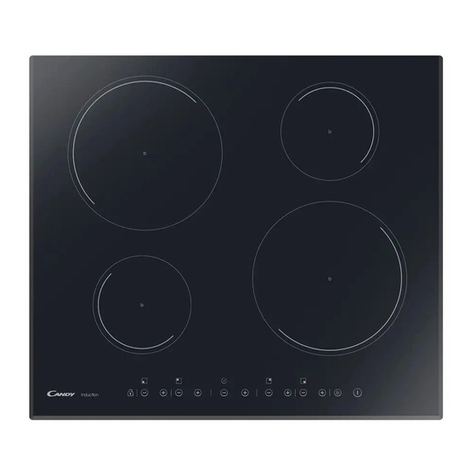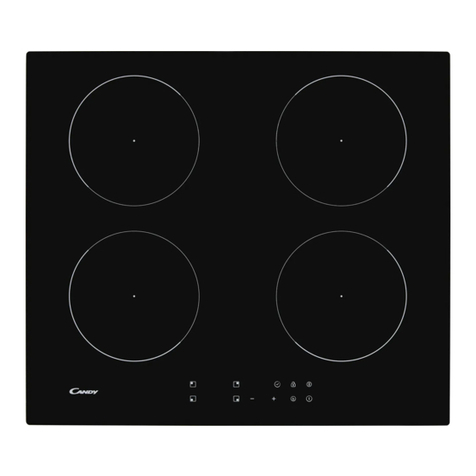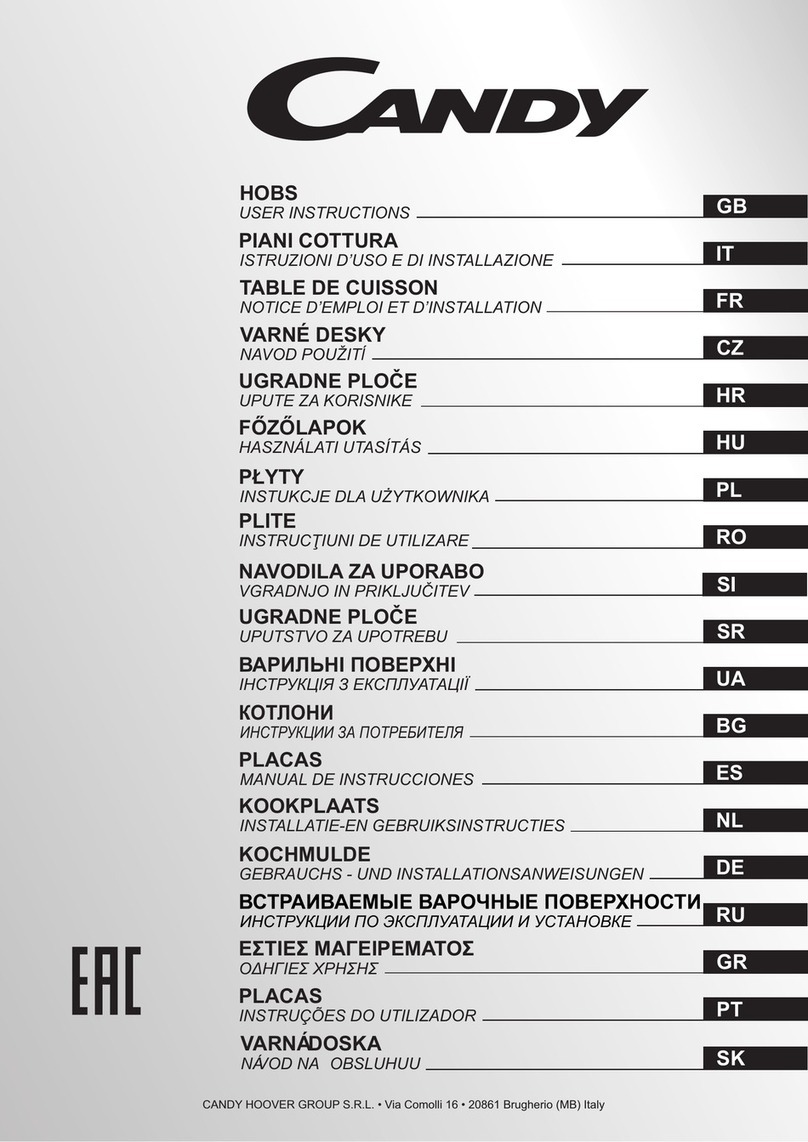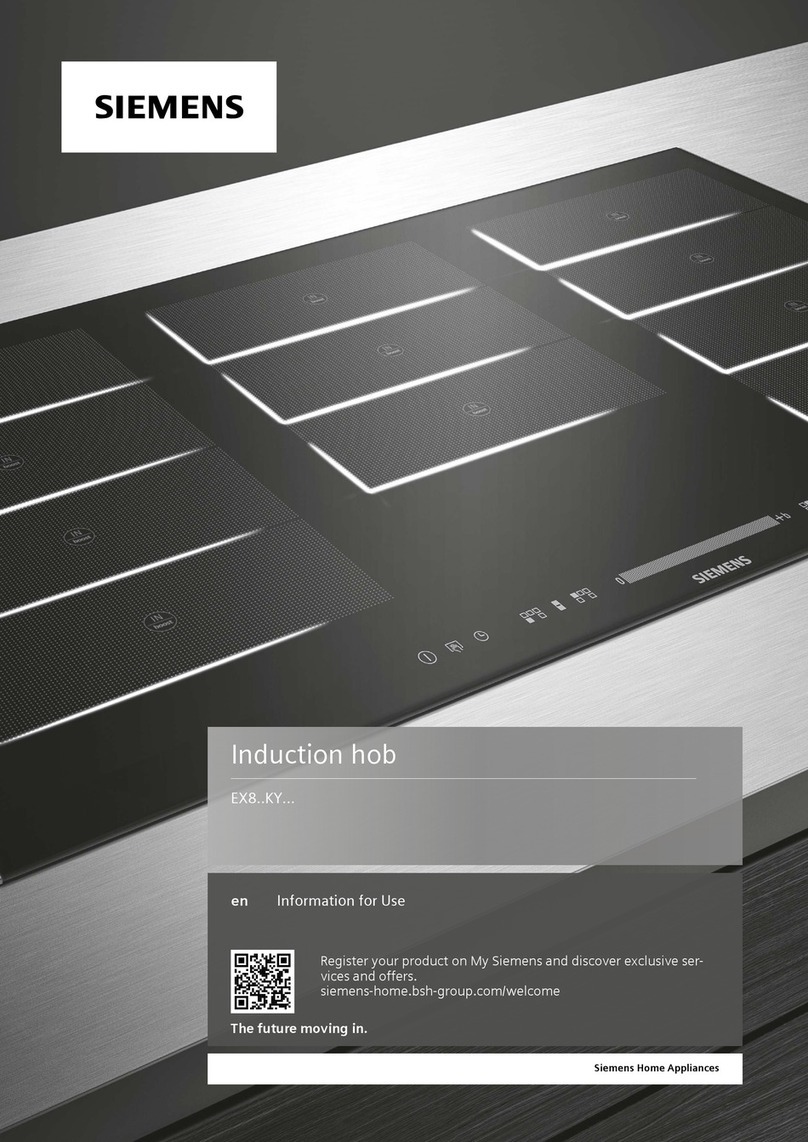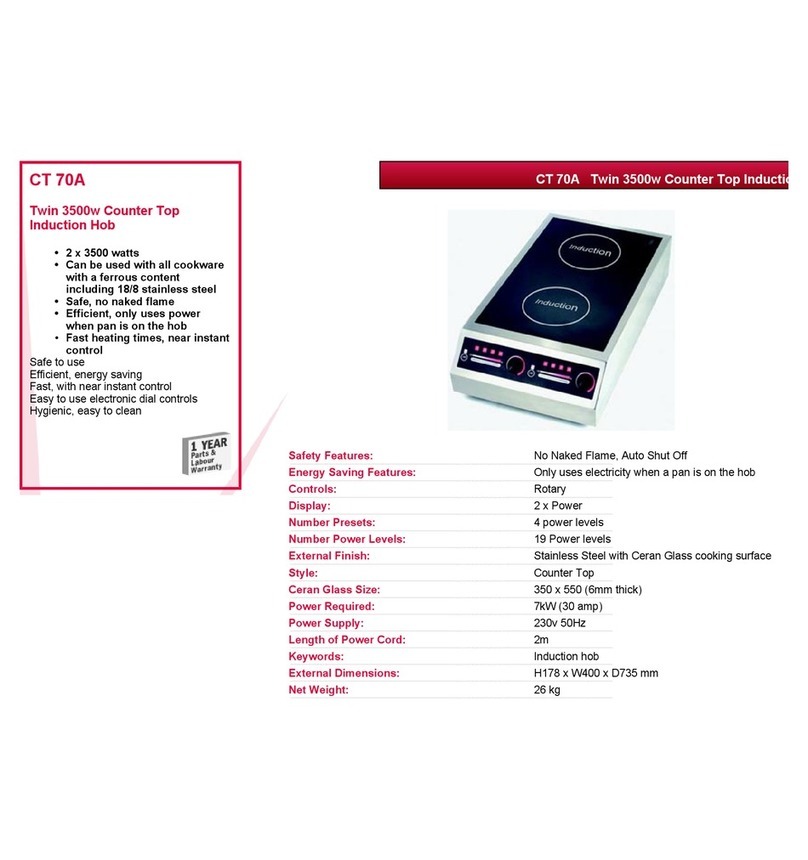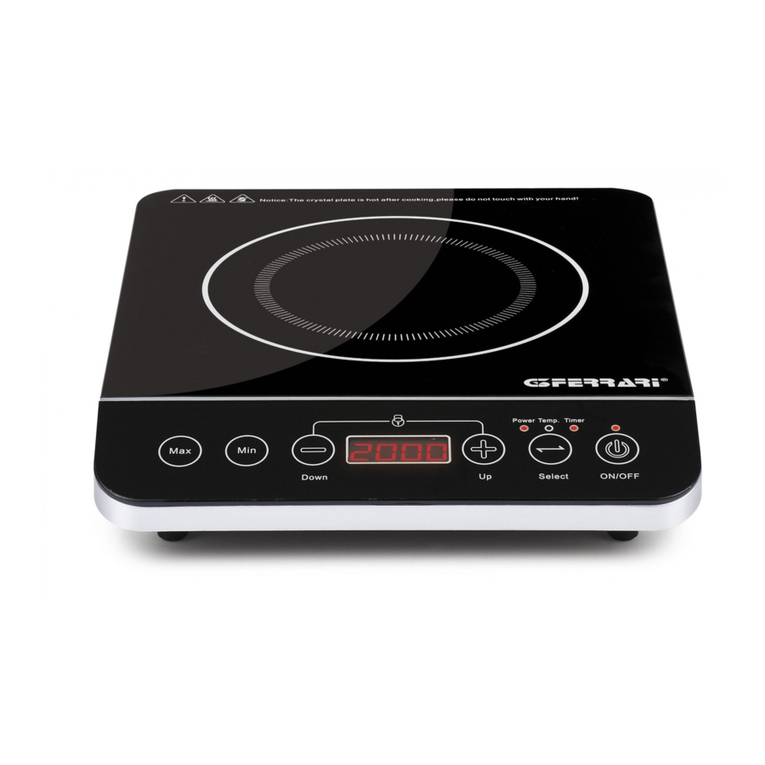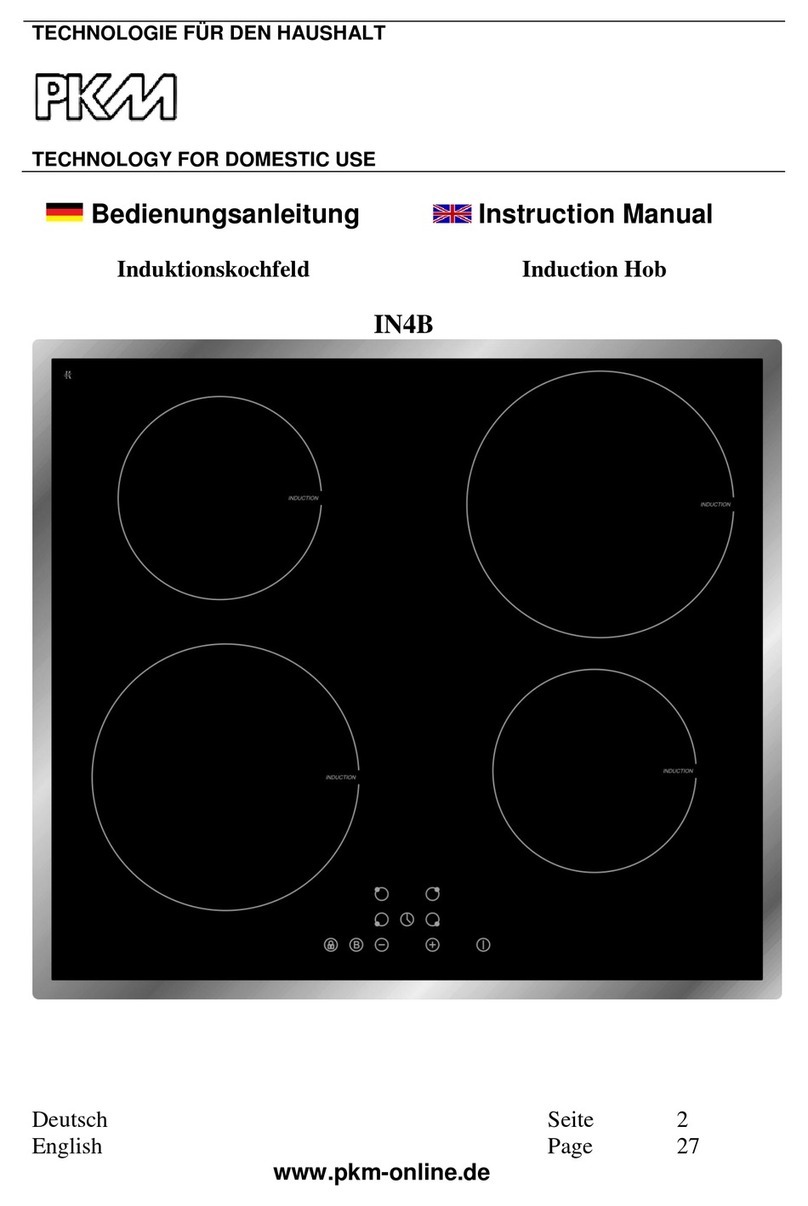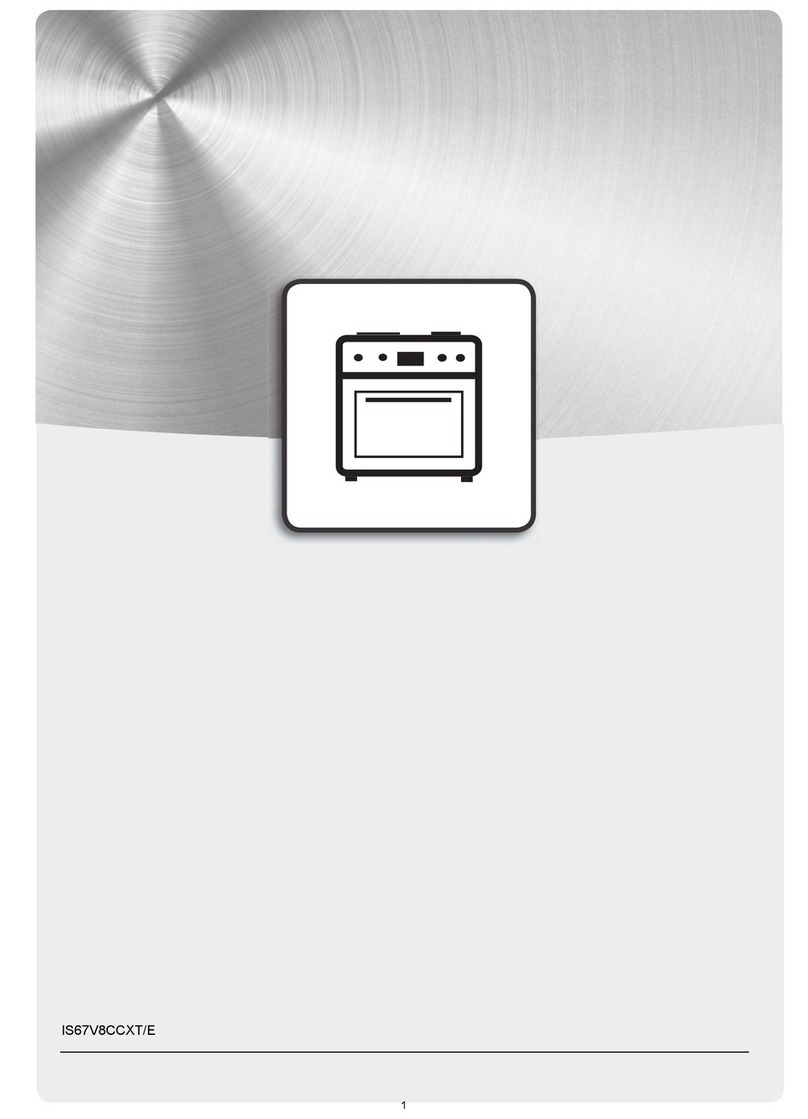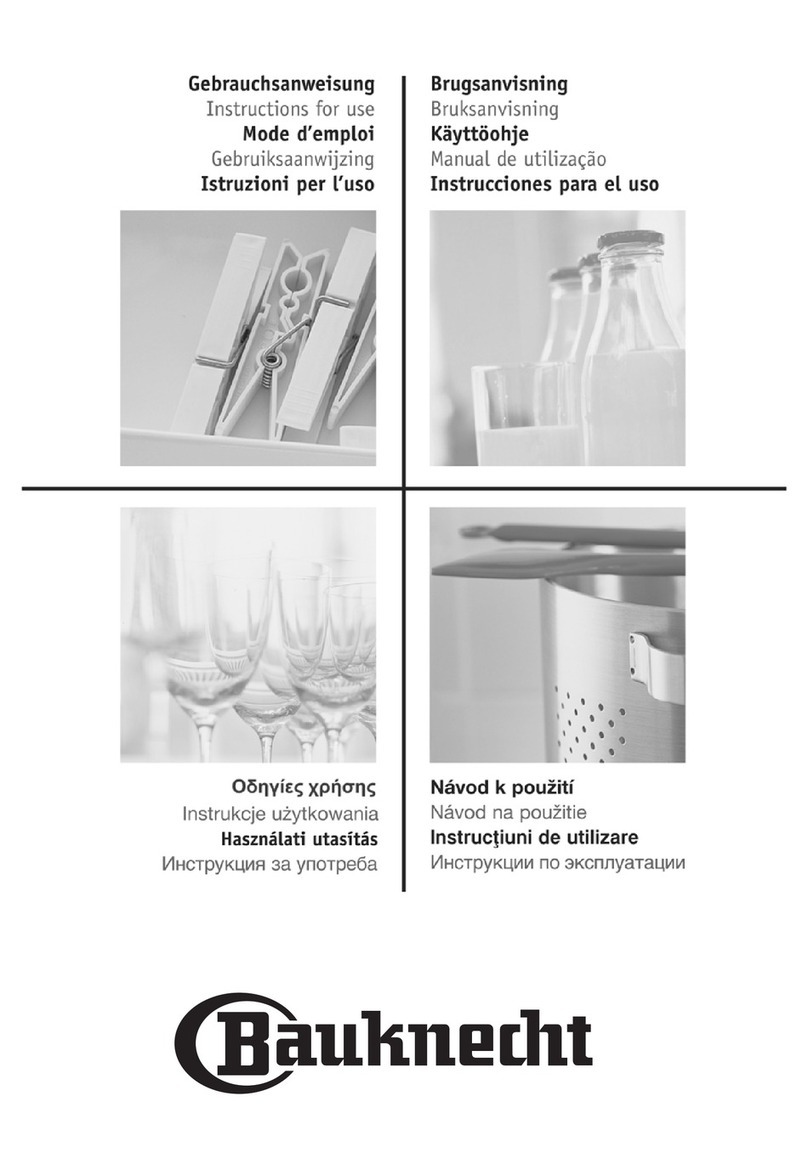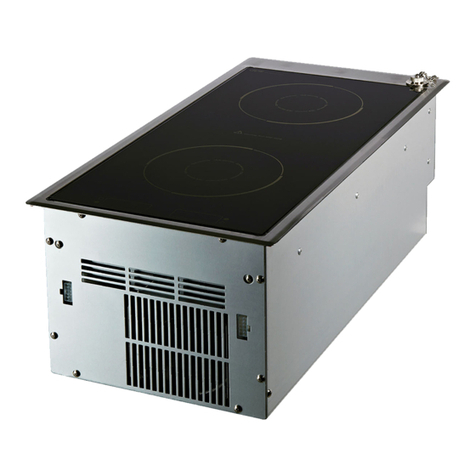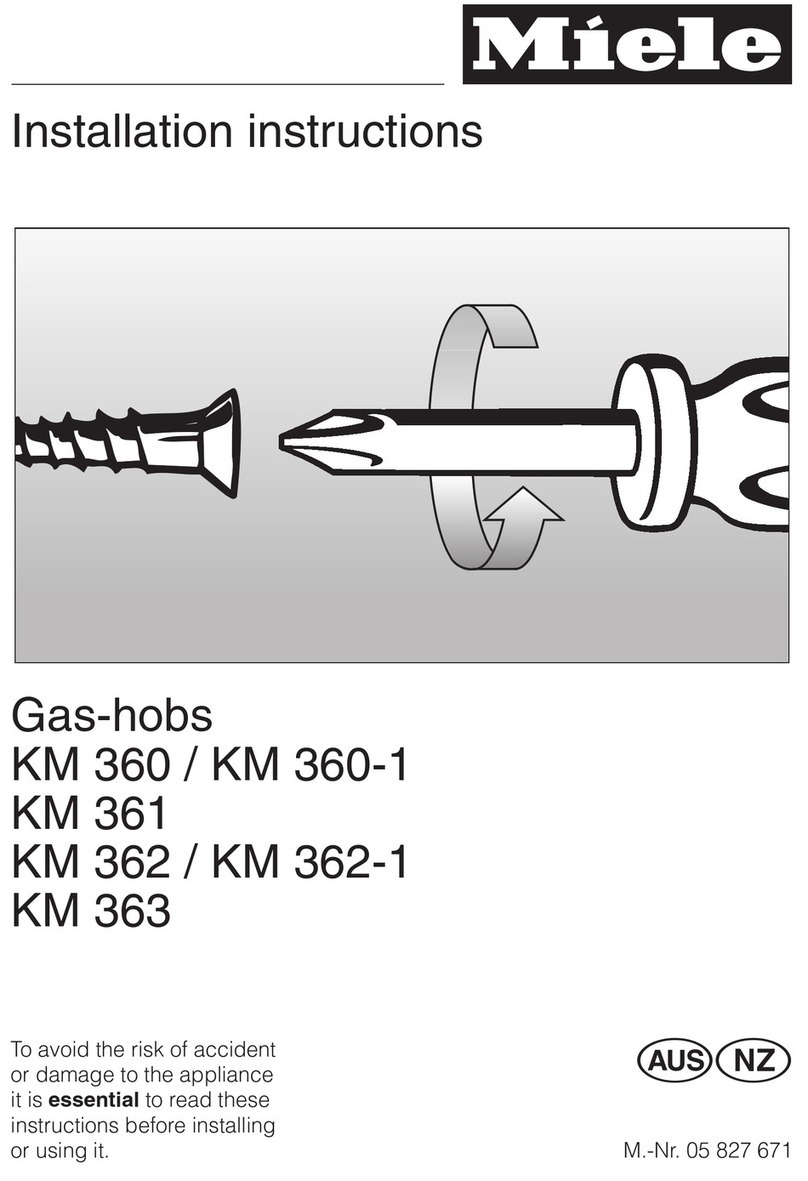
06 IT
Si consiglia di conservare le istruzioni di uso e
montaggio per riferimento successivo e, prima di
montare il piano di cottura, annotare il suo numero
di serie per richiedere assistenza al Servizio post-
vendita.
AVVERTENZA: l'elettrodomestico e le sue parti
accessibili diventano calde durante l'uso.
Prestare attenzione ad evitare qualsiasi contatto
con le resistenze di riscaldamento. Mantenere
lontani dall'elettrodomestico i bambini di età
inferiore agli 8 anni, a meno che non siano
continuamente supervisionati.
AVVERTENZA: utilizzare unicamente protezioni per
piani di cottura progettate dal produttore della cucina
o indicate dal produttore dell'elettrodomestico nelle
istruzioni d'uso come adatte, o ancora protezioni
incorporate nell'elettrodomestico. L'utilizzo di
protezioni non adatte può provocare incidenti.
AVVERTENZA: la cottura senza sorveglianza su un
piano di cottura in presenza di grasso o olio nella
pentola può essere pericolosa, con rischio di
incendi. NON cercare MAI di spegnere un incendio
con acqua, bensì spegnere l'elettrodomestico e
coprire la fiamma con un coperchio o una coperta
antifiamma.
AVVERTENZA: pericolo di incendio: non
appoggiare nulla sulle superfici di cottura.
AVVERTENZA: se la superficie è crepata, non
toccare la vetroceramica e spegnere
l'elettrodomestico per evitare la possibilità di
elettrocuzioni.
L'elettrodomestico può essere utilizzato da
bambini di età superiore a 8 anni e da persone con
ridotte capacità fisiche, sensoriali o mentali,
oppure prive di esperienza e conoscenza, se
supervisionate o istruite riguardo all'uso
dell'elettrodomestico in sicurezza, e se
comprendono i rischi che derivano dall'uso dello
stesso. I bambini dovrebbero essere supervisionati
per assicurarsi che non giochino con
l'elettrodomestico. La pulizia e la manutenzione da
parte dell'utente non possono essere effettuate da
bambini senza supervisione.
ATTENZIONE: il processo di cottura deve essere
supervisionato. Un processo di cottura di breve
termine deve essere supervisionato in continuo.
Si consiglia vivamente di tenere i bambini a
distanza dalle zone di cottura quando queste
sono in funzione o quando sono spente, per tutto il
tempo durante il quale l'indicatore di calore
residuo rimane attivo, per evitare il rischio di
ustioni gravi.
Questo elettrodomestico non è concepito per
funzionare con temporizzatori esterni o con
sistemi di comando a distanza separati.
Se è presente, non guardare direttamente gli
elementi riscaldati della lampada alogena.
Collegare al cavo di alimentazione una spina
dimensionata per la tensione, la corrente e la
potenza indicate nella targhetta e dotata del
contatto di terra. La presa deve essere
dimensionata per la potenza indicata sulla
targhetta e deve avere il contatto di terra collegato
e funzionante. Il conduttore di terra è giallo-verde.
Questa operazione deve essere eseguita solo da
un tecnico adeguatamente addestrato. In caso di
incompatibilità tra presa e spina
dell'elettrodomestico, richiedere ad un tecnico
specializzato di sostituire la presa con un'altra di
tipo compatibile. La spina e la presa devono
ISTRUZIONI DI SICUREZZA
essere conformi alle normative attuali del paese
di installazione.
Il collegamento alla rete di alimentazione può
essere effettuato anche collocando un interruttore
automatico onnipolare tra l'elettrodomestico e la
rete di alimentazione, in grado di supportare il
carico massimo collegato, in linea con la
legislazione corrente.
Il cavo di terra giallo-verde non deve essere
interrotto dall'interruttore automatico. La presa o
l'interruttore automatico onnipolare utilizzati per il
collegamento devono essere facilmente accessibili
al momento del montaggio dell'elettrodomestico.
La disconnessione può essere eseguita con la
spina accessibile o aggiungendo un interruttore
sul cablaggio fisso, nel rispetto delle normative
relative ai cablaggi.
Se il cavo di alimentazione dell'elettrodomestico
dovesse essere danneggiato, farlo sostituire dal
produttore, dal suo servizio tecnico o da tecnici
qualificati, per evitare rischi. Il conduttore di terra
(giallo-verde) deve essere più lungo di 10 mm sul
lato della morsettiera. La sezione dei conduttori
interni deve essere adatta alla potenza assorbita
dal piano di cottura (come indicato sulla
targhetta). Il cavo di alimentazione deve essere di
tipo H05 GG-F per pancottura da 60-75 cm o
H05-V2V2-F per pancottura da 75 cm.
Non appoggiare sul piano di cottura oggetti
metallici come coltelli, forchette, cucchiai o
coperchi. Potrebbero scaldarsi eccessivamente.
Non appoggiare sulle zone riscaldanti pellicole di
alluminio e padelle in plastica.
Dopo ogni utilizzo è necessario pulire il piano di
cottura per evitare l'accumulo di sporcizia e grasso.
Se ci sono accumuli di questo tipo vengono cotti
nuovamente quando il piano di cottura viene
acceso, creando fumo e odori sgradevoli per non
parlare del rischio di propagazione di incendi.
Non utilizzare mai un getto di vapore o ad alta
pressione per la pulizia dell'elettrodomestico.
Non toccare le zone riscaldanti durante il
funzionamento o per un breve periodo dopo l'uso.
Non cuocere mai gli alimenti direttamente sul
piano di cottura in vetroceramica.
Utilizzare sempre i recipienti di cottura adatti.
Mettere sempre la pentola al centro del gruppo sul
quale si sta effettuando la cottura. Non appoggiare
nulla sul pannello di comando.
Mai utilizzare il piano di cottura come superficie di
lavoro.
Mai utilizzare il piano di cottura come tagliere.
Non appoggiare oggetti pesanti al di sopra del
piano di cottura. Se cadono sul piano possono
danneggiarlo.
Non utilizzare il piano di cottura per riporvi oggetti.
Non fare scivolare i recipienti sul piano di cottura.
Il funzonamento dell'elettrodomestco alle frequenze
nomnalnon rchede alcuna operazone o
mpostazone.
In caso drottura del vetro del pano cottura:
Spegnere mmedatamente tuttbrucatore le
resstenze elettrche e staccare l'almentazone
elettrca dell'elettrodomestco.
Non toccare la superfce dell'elettrodomestco.
Non utlzzare l'elettrodomestco.
